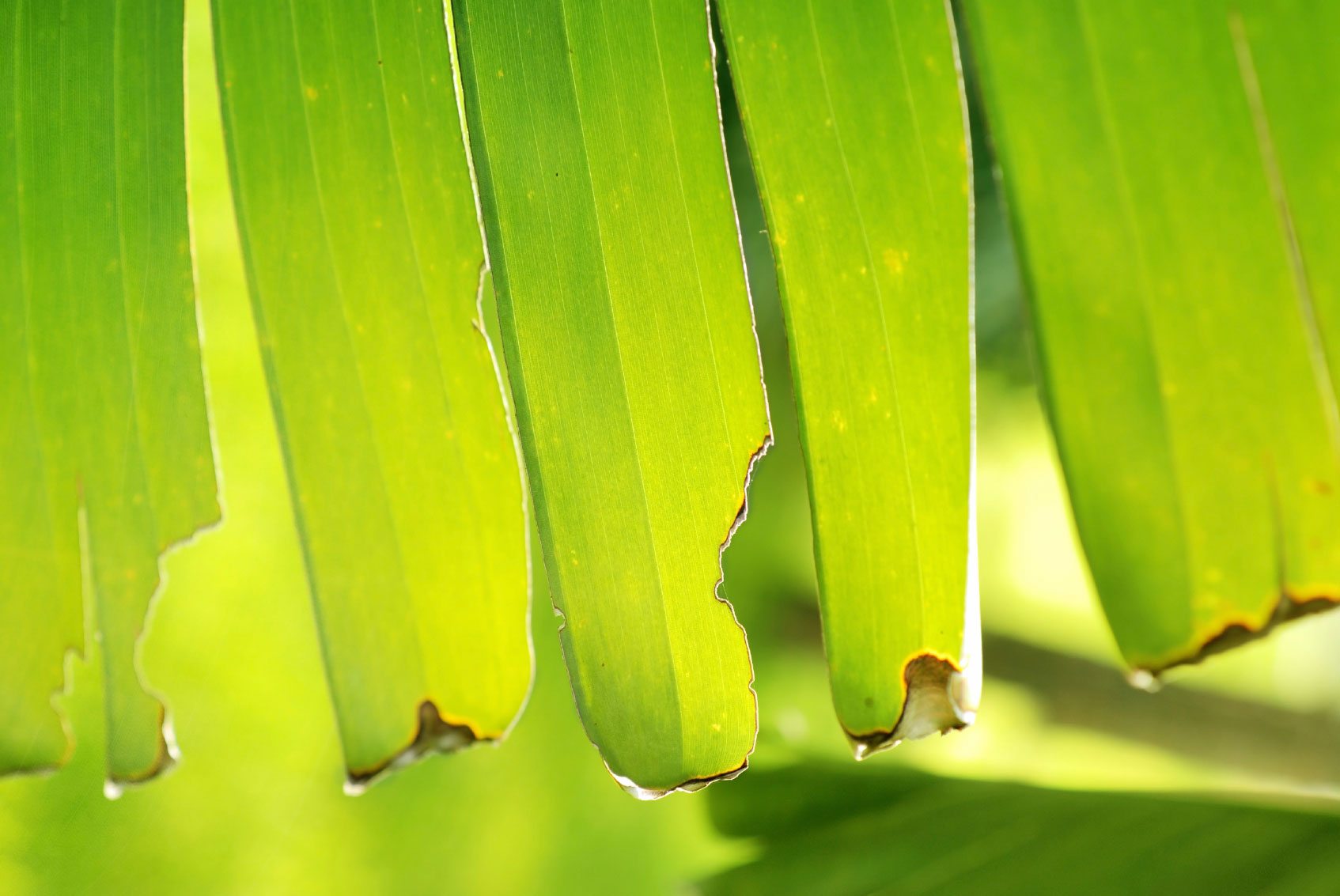What To Do For Fraying Or Shedding Palm Fronds


Winter's icy winds and heavy snows are subsiding and the kiss of summer sun is on the horizon. Now is the time to take stock of the damage to your plants. Fraying palm tips are common sights after storms. They may also be caused by mechanical damage, desiccation, disease, and even nutrient deficiency or excesses. Identify the cause and learn what to do about your palm tree shedding and fraying.
Palm Tree Shedding and Fraying Foliage
Fraying or shedding palm fronds occur naturally or as the result of pest damage or disease. They are unsightly but usually don't affect the plant's health unless all the foliage is heavily tattered, which can affect photosynthesis. This reduces the plant's ability to collect solar energy to turn into important carbohydrates. Most damage from wind, ice, and snow is limited to the most exposed leaves and can simply be cut out after all danger of frost has passed. Other reasons for the damage may require a more thorough solution.
Natural Fraying and Shedding of Palms
Palm trees regularly grow new leaves and shed the old ones. This palm tree shedding is part of the tree's natural growth and is not cause for concern. Some palms do not self clean, so you can prune out the dead leaves. Palm leaf shedding starts with fraying foliage, which eventually leaves the entire frond and stem brown and dead. Frayed palm leaves may also be caused from ice damage. Although it mars the appearance of the lovely foliage, it is not necessary to trim the ends unless it really offends you. Fraying or shedding palm fronds may be yellow, black, or brown at just the ends or on the entire leaf and stem. This distinction can help you diagnose the cause.
Site Conditions for Damaged Palm Fronds
- Wind and icy weather causes tip damage, which is usually brown from ice and yellow to brown from wind.
- Dryness is also a factor. Palm trees are often native to warm climes but they still need additional water to prevent the foliage from drying out when the area is extremely arid. The tips will start to dry and discolor and eventually the entire frond will turn brown.
- Yellow fronds indicate that the plant is receiving too much water.
- Soil acidity is another factor in fraying palm tips. Clues that the soil is too salty or alkaline will appear in the form of blackened fraying palm tips. Add a little gypsum or sulfur to combat this issue.
Bugs and Other Pests Causing Frayed Palm Leaves
Scale, whiteflies, and aphids are frequent eaters at the palm tree buffet. Their feeding habits suck vital fluids from the plant, causing reduced vigor and discolored leaves. Rodents nibble at the ends of the new growth producing frayed palm leaves. Gophers and rabbits will also add their feed damage, which is unfortunate for the tree's health when they eat off all the baby leaves. This inhibits regular healthy growth, so it is important to get a handle on any furry pests in the area.
Diseases Causing Palm Leaf Damage
Fungal diseases occur when conditions are moist and warm. Avoid overhead watering which can increase the spore growth and reduce leaf health. Diseases that attack palms may include false smut. It is also called Graphiola leaf spot and has an appearance similar to the normal smut or speckled discoloration found on many palm species when the fronds are young. In this case, the false smut starts out as warty black spots on fronds and can progress to killing the entire leaf and petiole. Copper fungicides and the removal of infected leaves will prevent the spread of the disease and further palm leaves shedding from damage.
Sign up for the Gardening Know How newsletter today and receive a free copy of our e-book "How to Grow Delicious Tomatoes".

Bonnie Grant is a professional landscaper with a Certification in Urban Gardening. She has been gardening and writing for 15 years. A former professional chef, she has a passion for edible landscaping.